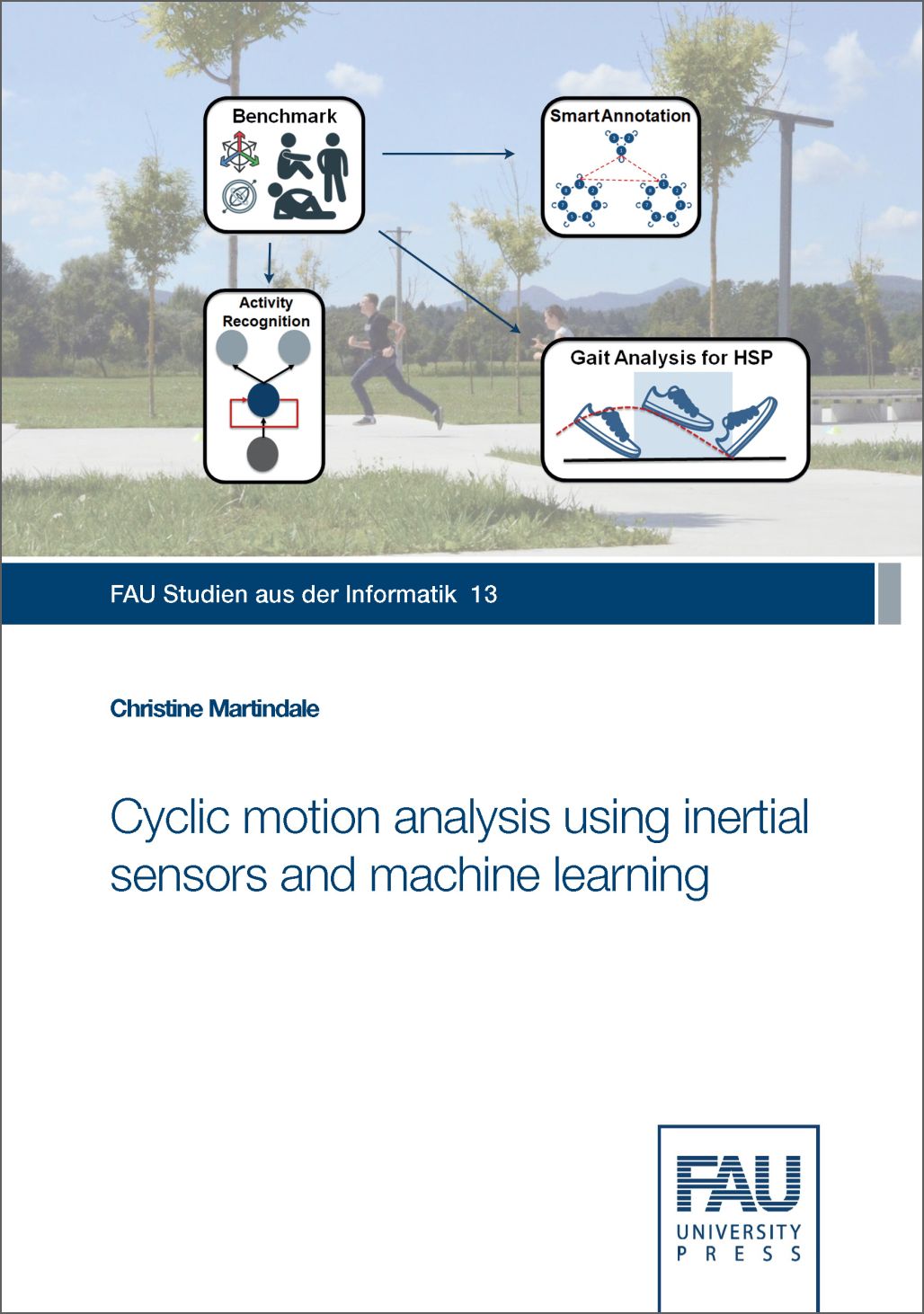Description
Cyclic motions such as walking, running or cycling are common to our daily lives. Thus, the analysis of these cycles has an important role to play within both the medical field, e.g. gait analysis, and the fitness domain, e.g. step counting and running analysis. For such applications, inertial sensors are ideal as they are mobile and unobtrusive. The aim of this thesis is to capture cyclic motion using inertial sensors and subsequently analyse them using machine learning techniques.
A lack of realistic and annotated data currently limits the development and application of algorithms for inertial sensors under non-laboratory conditions. This is due to the effort required to both collect and label such data. The first contributions of this thesis propose novel methods to reduce annotation costs for realistic datasets, and in this manner enable the labelling of a large benchmark dataset. The applicability of the dataset is demonstrated by using it to propose and test a robust algorithm for simultaneous human activity recognition and cycle analysis. One of these methods for reducing annotation costs is then deployed to develop the first mobile gait analysis system for patients with a rare and heterogeneous disease, hereditary spastic paraplegia (HSP).
Thus, machine learning algorithms which set the state-of-the-art for cycle analysis using inertial sensors were proposed and validated by this thesis. The outcomes of this thesis are beneficial in both the medical and fitness domains, enabling the development and use of algorithms trained and tested in realistic settings.


Reviews
There are no reviews yet.